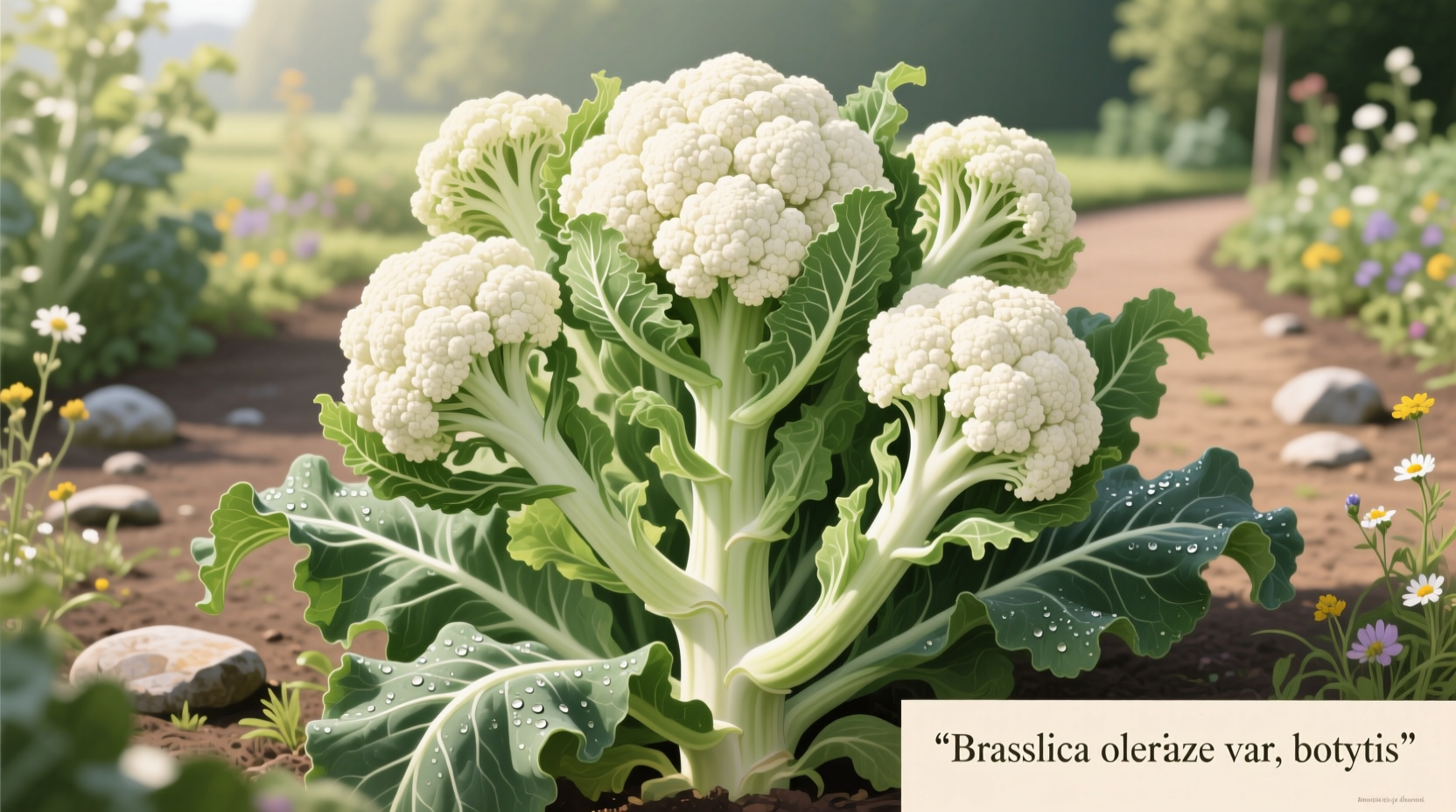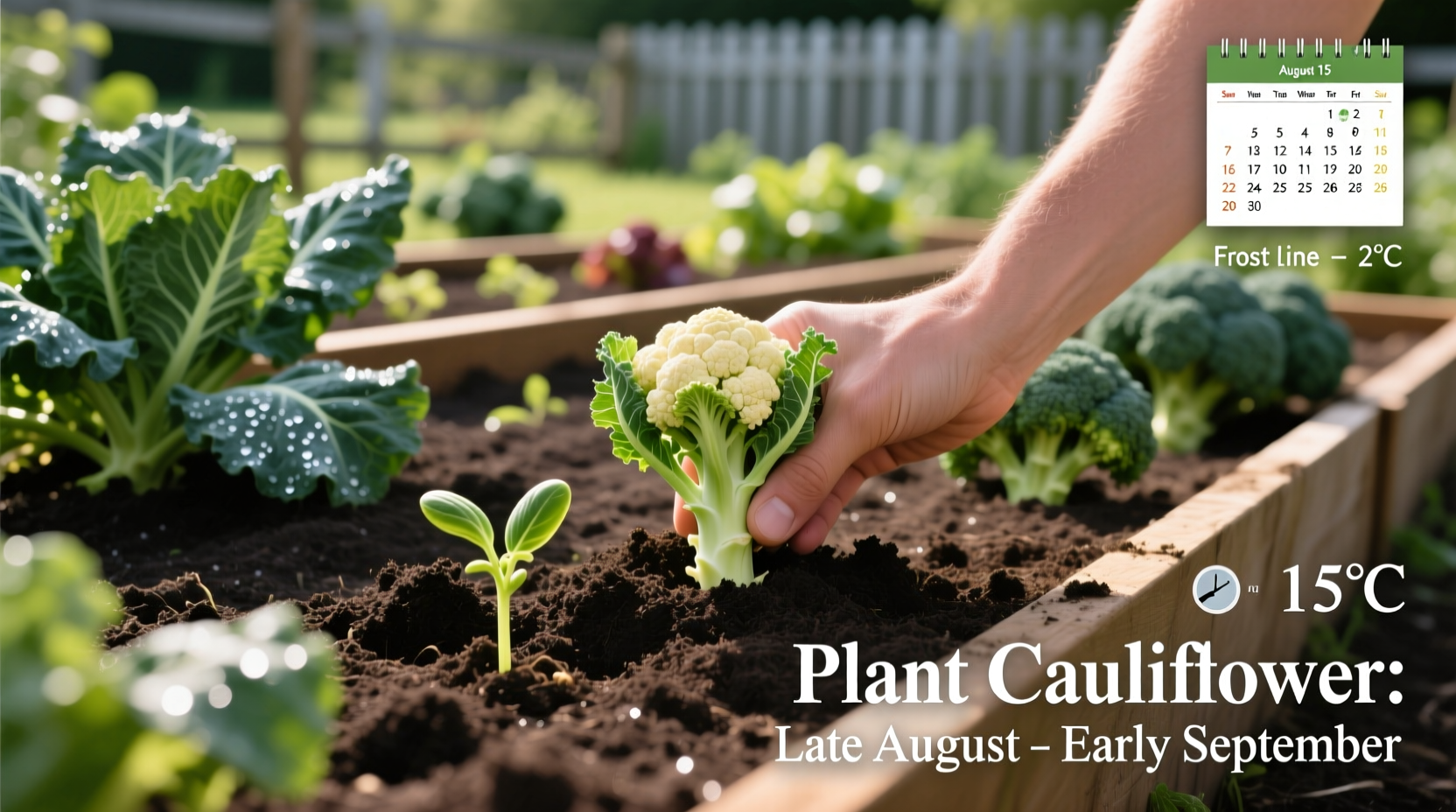Knowing exactly when to plant cauliflower separates successful harvests from disappointing results. This cool-season crop demands precise timing to avoid buttoning (small, premature heads) or curd discoloration. Whether you're a beginner gardener or expanding your vegetable patch, understanding regional planting windows ensures crisp, white heads perfect for roasting, steaming, or making cauliflower rice.
Why Cauliflower's Temperature Sensitivity Matters
Cauliflower (Brassica oleracea var. botrytis) is notoriously temperature-sensitive compared to other brassicas. University of California Cooperative Extension research shows that exposure to temperatures below 50°F (10°C) for extended periods triggers premature flowering, while temperatures above 80°F (27°C) cause curd yellowing and poor head formation.
The ideal growing window requires consistent temperatures between 60-68°F (15-20°C). This narrow range explains why many gardeners struggle with cauliflower—it's not just when you plant, but what temperatures follow. For reliable results, you must align planting dates with your local microclimate's temperature patterns.

Spring Planting Strategy: Beating the Heat
For spring harvests, start seeds indoors 4-6 weeks before your area's last expected frost date. The Old Farmer's Almanac recommends transplanting seedlings when they reach 4-6 inches tall and outdoor soil temperatures consistently reach 50°F (10°C).
Key considerations for spring cauliflower planting times:
- Transplant on cloudy days or in evening to reduce shock
- Use row covers for first 2-3 weeks to protect from late frosts
- Choose early-maturing varieties like 'Snow Crown' (55 days) for shorter seasons
- Apply mulch immediately after transplanting to maintain consistent soil temperature
Gardeners in USDA zones 1-5 should prioritize spring planting, as summer temperatures often exceed cauliflower's tolerance. In warmer zones (6-10), spring planting requires careful variety selection and vigilant monitoring as temperatures rise.
Fall Planting: Your Secret to Perfect Heads
Many experienced growers consider fall the best time to plant cauliflower because cooling temperatures match the crop's ideal growing conditions. To determine your fall planting date:
- Find your first expected fall frost date (check USDA Plant Hardiness Zone Map)
- Add your variety's days to maturity (typically 50-100 days)
- Add 14 days for "fall factor" (slower growth in cooling temperatures)
- Count backward from first frost date to determine seed-start date
For example, if growing 'Amazing' cauliflower (70 days to maturity) in Zone 7 with first frost around November 15:
70 days + 14 days = 84 days before November 15 = August 23 seed-start date
Fall planting avoids the temperature fluctuations of spring while producing sweeter, firmer heads. Cornell University's College of Agriculture notes that fall-harvested cauliflower typically shows 20-30% better head formation than spring crops in most regions.
Regional Planting Calendar by USDA Zone
| USDA Zone | Last Spring Frost | Spring Planting Window | First Fall Frost | Fall Planting Window |
|---|---|---|---|---|
| 3-4 | May 15-30 | Early April transplant | Aug 15-30 | June 1-15 start |
| 5-6 | May 1-15 | Early April transplant | Sep 15-30 | July 1-15 start |
| 7-8 | Apr 1-15 | Mid-Feb to early March | Oct 15-30 | July 15-Aug 15 start |
| 9-10 | Mar 1-15 | Late Jan to early Feb | Nov 15-30 | Aug 15-Sep 15 start |
This cauliflower planting schedule by zone accounts for regional climate variations. Note that coastal areas may have extended windows due to moderated temperatures, while mountain regions often require earlier fall planting.
Microclimate Adjustments for Your Garden
Your exact planting dates depend on local microclimates. The National Gardening Association identifies four key factors that modify regional recommendations:
- Urban heat islands: City gardeners can plant 7-10 days later in spring
- Elevation: For every 1,000 feet increase, adjust dates by 5-7 days
- South-facing slopes: Warm 10-14 days earlier than flat areas
- Water proximity: Coastal areas have extended seasons (add 10-14 days)
Track your garden's actual soil temperatures using a simple $10 soil thermometer. Plant when readings consistently hit 50°F at 2-inch depth for 3 consecutive mornings—this soil temperature for planting cauliflower matters more than calendar dates.
Step-by-Step Planting Process
Follow these steps for successful cauliflower establishment:
- Soil preparation: Amend with 3-4 inches of compost and balanced organic fertilizer 2 weeks before planting
- Transplanting: Bury seedlings up to first true leaves for stronger stems
- Spacing: Allow 18-24 inches between plants in rows 24-36 inches apart
- Watering: Maintain consistent moisture (1-1.5 inches/week)—drought causes buttoning
- Blanching: When heads reach 2-3 inches, tie outer leaves over curd to maintain white color
For growing cauliflower in containers, use 5-gallon pots with drainage holes and a soilless mix. Container plants require more frequent watering and feeding but offer temperature control by moving pots to optimal locations.
Troubleshooting Common Planting Mistakes
Even with proper cauliflower planting times, these issues commonly occur:
- Buttoning: Caused by temperature stress or delayed transplanting. Start seeds later for spring crops.
- Riceyness: High temperatures during curd formation. Harvest earlier or provide afternoon shade.
- Browning: Sun exposure or boron deficiency. Blanch heads and apply boron spray if needed.
- Purple discoloration: Cold stress. Protect plants during cold snaps with row covers.
The University of Minnesota Extension reports that 68% of cauliflower failures stem from improper planting timing rather than pests or disease. By aligning your planting schedule with temperature requirements, you'll dramatically improve success rates.
Extending Your Harvest Season
For continuous harvests, use succession planting:
- Plant 3 varieties with different maturity dates simultaneously
- Stagger plantings every 10-14 days through appropriate season
- Use cold frames for early spring or late fall harvests
- Try heat-tolerant varieties like 'Graffiti' (purple) or 'Cheddar' (orange) for summer planting
Gardeners in zones 8-10 can often maintain year-round production with careful variety selection and microclimate management. The Southern Exposure Seed Exchange notes that in mild winter regions, fall-planted cauliflower often overwinters for early spring harvests.











 浙公网安备
33010002000092号
浙公网安备
33010002000092号 浙B2-20120091-4
浙B2-20120091-4